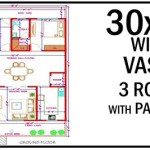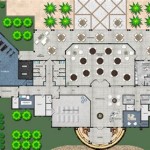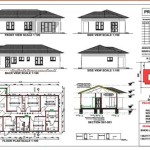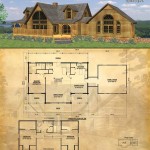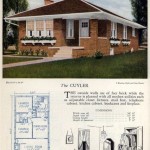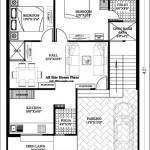Small House Plans With Garage In Basement: Maximizing Space and Value
The rising cost of land and construction materials has spurred a growing interest in efficient and innovative housing solutions. Small house plans, defined as dwellings typically under 1,000 square feet, offer a compelling alternative to larger, more expensive homes. When combined with a garage located in the basement, these plans provide a unique blend of affordability, functionality, and space optimization. This design strategy allows homeowners to maximize usable living space on the main floor while providing convenient parking and storage below. This article will explore the advantages, considerations, and design elements associated with small house plans that incorporate a garage within the basement.
The integration of a garage into the basement level presents several distinct advantages. First and foremost, it eliminates the need for a detached garage or a sprawling driveway, thereby freeing up valuable yard space. In densely populated areas or on smaller lots, this is a significant benefit, allowing for more outdoor living space, landscaping, or recreational areas. Secondly, a basement garage offers enhanced security and protection from the elements. Vehicles are shielded from harsh weather conditions, such as snow, rain, and extreme heat, potentially prolonging their lifespan. Moreover, the direct access from the garage to the house adds a layer of security, particularly during inclement weather or in areas with higher crime rates. Finally, the basement garage can serve as a multi-functional space. Beyond vehicle storage, it can be used as a workshop, storage area, or even a potential future expansion of the living space.
Advantages of a Basement Garage in a Small House Plan
Integrating a garage into the basement of a small house plan delivers a multitude of benefits, especially when considering the limitations often associated with smaller properties.
Space Efficiency: The most prominent advantage is the efficient use of space. By placing the garage below the main living areas, the footprint of the house remains compact. This is particularly valuable on small or narrow lots where maximizing usable outdoor space is a priority. Without a detached garage taking up valuable real estate, homeowners can enjoy larger gardens, patios, or recreational areas. Furthermore, in urban environments where lot sizes are often constrained, a basement garage helps to comply with zoning regulations and maximize the buildable area of the property. The overall design minimizes horizontal sprawl, embracing vertical efficiency.
Cost Savings: While excavating a basement can add to the initial construction cost, the long-term savings can be substantial. Building a detached garage involves additional foundation work, roofing, and siding, all of which contribute to increased expenses. A basement garage integrates these elements into the existing foundation and structure of the house, reducing the overall cost. Furthermore, the reduction in driveway construction and maintenance can also lead to savings over time. The basement garage also offers energy efficiency benefits. Being underground, the garage is naturally insulated, helping to regulate temperature and reduce energy consumption for heating and cooling during extreme weather. This passive temperature control can translate into lower utility bills over the long term.
Enhanced Security and Convenience: A basement garage offers a significant improvement in security and convenience compared to detached garages or open parking. Direct access from the garage to the house eliminates the need to walk outside, especially during inclement weather or at night. This feature is particularly beneficial for families with young children or individuals with mobility issues. Furthermore, the garage provides a secure storage space for vehicles, tools, and other valuable items, protecting them from theft and vandalism. The enclosed nature of the basement garage also shields vehicles from the elements, preventing damage from hail, snow, and sun exposure, thereby prolonging their lifespan and maintaining their resale value.
Key Design Considerations
Designing a small house plan with a garage in the basement requires careful consideration of several key design elements to ensure functionality, safety, and structural integrity. These considerations range from site selection and excavation to ventilation and accessibility.
Site Selection and Excavation: The first and perhaps most crucial consideration is site selection. The suitability of the site for a basement garage depends on factors such as soil type, water table level, and topography. Soil testing and geological surveys are essential to determine the stability of the ground and the potential for water infiltration. High water tables can pose significant challenges and require costly drainage solutions. The slope of the land also plays a vital role. Gently sloping sites are ideal for walk-out basements, where one side of the basement is partially or fully exposed, providing natural light and easy access. Excavation costs can vary significantly depending on the depth and complexity of the excavation, as well as the type of soil encountered. Proper planning and engineering are crucial to ensure the stability of the surrounding soil and prevent landslides or other structural issues.
Structural Integrity and Foundation Design: The foundation design must be robust enough to support the weight of the house and withstand soil pressure. Reinforced concrete walls are typically used for basement foundations, and the thickness of the walls depends on the height of the walls, the soil conditions, and local building codes. Adequate waterproofing is essential to prevent water damage and maintain a dry and healthy living environment. Drainage systems, such as French drains and sump pumps, may be required to manage groundwater. The floor of the garage should be sloped slightly towards a drain to prevent water from pooling. Proper ventilation is also critical to prevent the buildup of fumes and moisture. Standard ventilation systems typically involve incorporating vents and windows to facilitate air circulation. Carbon monoxide detectors should be installed to ensure the safety of the occupants.
Accessibility and Code Compliance: Accessibility is another important consideration. The driveway leading to the basement garage should have a gentle slope to allow for easy vehicle access, especially during winter months. Building codes often specify maximum slope gradients for driveways to ensure safety. Adequate lighting should be provided along the driveway and inside the garage to enhance visibility and security. Interior stairs from the garage to the main living area should be designed to meet building code requirements for headroom, tread depth, and riser height. Fire-rated doors and walls may be required to provide adequate fire separation between the garage and the living space. Local building codes regarding garage size, ceiling height, and setbacks must be strictly adhered to. Consult with a qualified architect or engineer to ensure compliance with all applicable regulations.
Design Elements and Customization Options
Small house plans with basement garages offer a wide range of design elements and customization options to suit individual needs and preferences. These design choices can enhance the functionality, aesthetics, and value of the home.
Layout and Floor Plan Design: The layout of the main floor should be carefully planned to maximize space and functionality. Open floor plans are common in small house designs, as they create a sense of spaciousness and allow for flexible use of the living areas. Strategic placement of windows and skylights can bring in natural light and further enhance the feeling of openness. Kitchens are often designed with compact appliances and efficient storage solutions to minimize clutter. Bathrooms typically feature space-saving fixtures and layouts. The staircase leading to the basement should be positioned to minimize its impact on the main floor living space. Consider utilizing space beneath the stairs for storage or a small powder room. Integrating built-in storage solutions throughout the house can help to maximize usable space and minimize the need for bulky furniture.
Material Selection and Finishes: The selection of materials and finishes plays a crucial role in the overall look and feel of the house. Durable and low-maintenance materials are often preferred for both the interior and exterior. Wood siding, brick veneer, and fiber cement siding are popular choices for exterior cladding. Energy-efficient windows and doors help to reduce energy consumption and improve the comfort of the home. Interior finishes should be chosen to create a cohesive and visually appealing design. Light-colored walls and ceilings can help to make the space feel brighter and larger. Hardwood floors, tile, and laminate are durable and easy-to-clean flooring options. The garage itself can be finished with epoxy flooring for durability and ease of maintenance. Insulated garage doors can help to regulate temperature and reduce noise transmission.
Multi-functional Garage Space: The basement garage can be designed to serve multiple purposes beyond vehicle storage. Consider incorporating a workshop area with built-in workbenches and storage cabinets. A portion of the garage can be designated as a storage area for seasonal items, sports equipment, or tools. With proper insulation and finishing, the garage can even be converted into a home gym, home office, or recreation room. Ensure that the garage is adequately ventilated and heated/cooled to make it a comfortable and usable space year-round. Electrical outlets and lighting should be strategically placed to accommodate various activities. The garage door itself can be upgraded with features such as remote control operation, insulated panels, and decorative windows.
Designing a small house plan with a garage in the basement is a complex undertaking that requires careful planning and attention to detail. Consulting with experienced architects, engineers, and contractors is essential to ensure a successful outcome. By carefully considering the advantages, design considerations, and customization options outlined in this article, homeowners can create a functional, affordable, and aesthetically pleasing living space that meets their unique needs and preferences. This type of design represents a practical and intelligent approach to modern housing, demonstrating how efficient space utilization can lead to comfortable and sustainable living.

Small Cottage Plan With Walkout Basement Floor

Small House Floor Plans With Basement

Drive Under House Plans With Basement Garage The Designers

Drive Under House Plans

Cottage Plans And Cabin With Finished Basement Floor

Drive Under House Plans With Basement Garage The Designers

Small Cottage Plan With Walkout Basement Floor

Drive Under House Plans With Basement Garage The Designers

Hillside House Plans With Garages Underneath Houseplans Blog Com

Cottage House Plan With 3 Bedrooms And 2 5 Baths 3800

